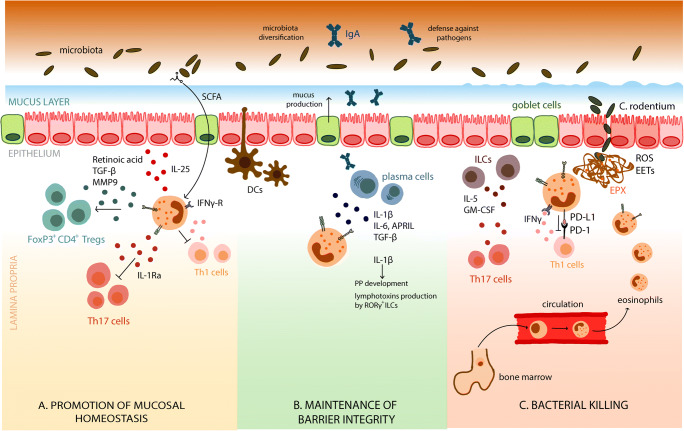Fig. 1.
Roles of eosinophils in intestinal homeostasis and host protective immunity. The gastrointestinal tract is home to a large population of resident eosinophils. a Under physiological conditions, eosinophils integrate tissue-derived signals and bacterial metabolites to promote mucosal homeostasis. They restrict inappropriate Th1 responses in response to microbiota-derived signals and inhibit Th17 cell by secreting IL-1Rα. Eosinophils also promote the differentiation of regulatory T cells via the release of TGF-β, MMP9 and retinoic acid. b Eosinophils maintain epithelial barrier integrity by enhancing intestinal mucus secretion and supporting IgA-producing plasma B cells through the production of cytokines such as IL-1β, TGF-β and IL-6, leading to the diversification of the microbiota. Eosinophil-derived IL-1β also promote the development of Peyer’s patches and lymphotoxins production by RORγ+ ILCs. c In response to bacterial pathogens such as C. rodentium breaching the epithelial barrier, eosinophils are further recruited from the bone marrow to sites of tissue damage, where they are conditioned by IFN-γ to facilitate bacterial killing through the release of extracellular DNA traps (EETs) and associated cytotoxic granule proteins. Concomitantly, eosinophils also downmodulate Th1 responses via the expression of PD-L1

